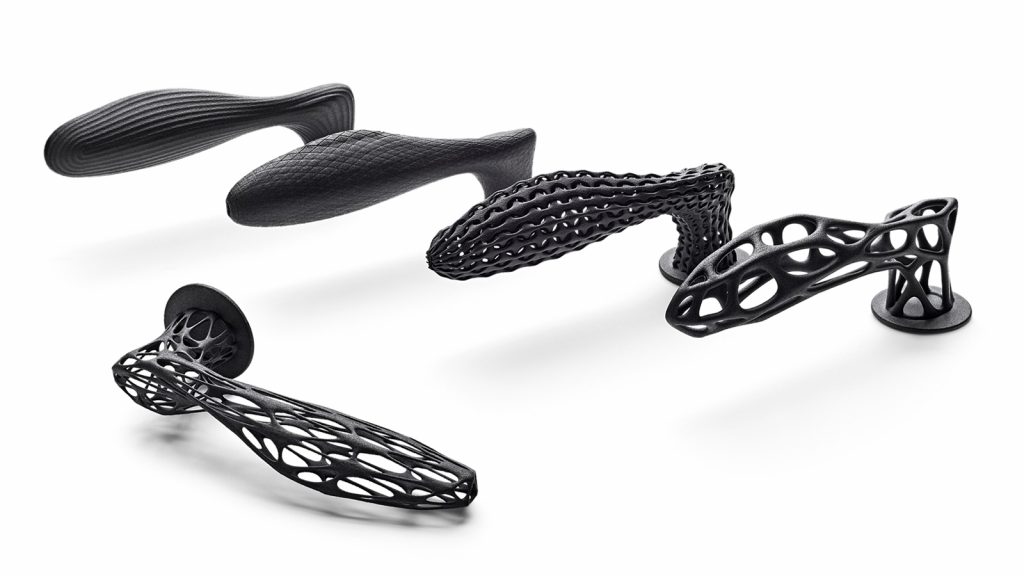Tata Consultancy Services is one of the largest IT services and consulting companies on earth. Widely known as TCS, they are the firm that powers your banks and insurance companies. TCS has offices in 46 countries, has over 400,000 employees and annual revenues over $19 billion. TCS is active in many different sectors and provides services ranging from Business Process Outsourcing to high-value management consulting, IT infrastructure as well as industrial services. For the past several years TCS has also been setting up 3D printing research and development centers to obtain 3D printing expertise. The company is gearing itself up to help more of its Fortune 500 customers come to grips with 3D printing. We asked their 3D printing head Srinivas Garigipati, Head Research & Innovation, Manufacturing Business Group, Tata Consultancy Services for more info.

What is TCS and what is its role in 3D printing?
Tata Consultancy Services(TCS) is an IT services, consulting, engineering and business solutions organization that has been partnering with many of the world’s largest businesses in their transformation journeys for the last fifty years. Here at TCS, we help our customers implement new and emerging technologies, business models, and modes of operation seamlessly—providing them with the knowledge and resources needed to be able to innovate. On the manufacturing front, alongside other emerging digital technologies, we are keen on helping our customers implement industrial 3D printing technologies to help their shop-floor operations in a number of ways. 3D printing being an additive to traditional MFG processes, TCS is actively supporting the planning, engineering design and modeling of early stage 3D printing adoption initiatives across the industry segments. In such emerging technology adoption journeys, we help our customers look past the proof of concept and prototypes into deployments. We assist our customers in realizing their transformational objectives in utilizing technologies like 3D printers to optimize the total cost of ownership, agile go-to market, increase mass customizability, enhance end-user experience, increase customer satisfaction, innovate after-sales services, and more.
What kinds of customers do you hope to engage with?
TCS has a strong manufacturing foot-print where we are currently engaged. We are equally looking forward to working with new customers to help provide them with the contextualization and seasoned guidance through their digital transformation into the era of Business 4.0. We can help manufacturers that are interested in leveraging emerging technologies such as 3D printing that need a thought-leading technology partner in their adoption journey. We offer end-to-end services, starting from the blueprinting through the planning, implementation, and support following the industry best practices. Our technology coverage expands beyond 3D printing, as we specialize in the contextualization, implementation and help in adopting digital technologies such as AI and Cognition, AR, VR, Connected X, Edge, Blockchain, Cloud, 5G, and other emerging concepts and trends to various manufacturing industry and customer scenarios.
What advice do you have should I wish to industrialize 3D printing in my company?
Do not implement 3D printing, or, for that matter, any new technology into your mainstream without understanding how it will affect the entire value chain. Pinpoint specific areas along your value chain that would benefit from the technology. Always ensure to follow an incremental adoption model with a solid long-term plan in place covering the aspects of infrastructure and business transition before taking the leap into a full-scale implementation. Also, don’t innovate simply for innovation’s sake; 3D printing implementation should be a strategic business decision that is made to solve a specific business problem or optimize a pre-existing process.
What is holding 3D printing back?
3D printings’ slow speed of production and cost compared to traditional subtractive manufacturing processes, unfortunately, is holding it back from becoming a main source of production at this time. To overcome these limitations, technology advancements and the implementation of software programs will be needed to make 3D printing a true mass-scale production option.
What is holding mass customization back?
Cost is one of the key factors. With the increase of mass customization, manufacturing becomes complex and costly. In order for mass customization to become an integral part of the manufacturing process, companies will have to spend and invest in thousands of 3D printing machines and the technology to make multiple small batches of customized product. In addition, the legacy manufacturing processes and highly optimized assembly lines need to be reimagined to support the mass customization.
How can companies get started with mass customization?
Companies should begin at the top. With commitment from leadership to transform the manufacturing process, committees can then be made to focus on integrating technology and additive manufacturing into the manufacturing process. From an implementation standpoint, companies should also reimagine their customer experience and start the journey with select pilot customers. Companies should begin using 3D printing to build prototypes and figure out how they can create their own customized products by using 3D printing before they firm up their roll out plan.
What new 3D printing developments excite you?
There is plenty to be excited about when it comes to 3D printing. For example, the improvements that have been made in printing. Many companies have successfully printed products made of metal that have passed full load testing and could be the future of 3D printing in automotive, aerospace, and other manufacturing industries. In order for 3D printing to be a large part of the manufacturing industry, the ability to print using alloys is crucial as many products used in the manufacturing industry are made with those materials and not plastics. Composite printing is becoming increasingly prominent as well. With manufacturer’s constant push to meet optimal lightweight and durability properties of the parts and products they create, the ability to 3D print composite structures helps them achieve both creative freedom, as well as the aforementioned qualities that are equally as important. Finally, developments in build platform size and freedom of movement in printers (specifically DMLS) is particularly interesting. By continuing to expand the limitations of size that 3D printers had previously been constrained to, the potential use cases for the technology from an industrial perspective continues to expand as well. Another exciting aspect of 3D print is the way it lays a foundation to achieve mass customization of manufacturing. In addition, it is exciting because it provides a low capex model of manufacturing setups.
What role does software have to play in 3D printing?
Software plays the sheet anchor role in 3D printing.It controls the entire workflow of the 3D printing process. When you have mass-production of a product, you’re going to need a software application to orchestrate the activities that surround a 3D printing environment. Software can manage the estimating, pricing, scheduling, order entry, quality assurance, data collection, billing, and everything required from an end to end perspective to prepare and execute a 3D print. Robust software systems are needed across the value chain to realize the mass customization through 3D printing. Software plays a key role even in the customer engagement, experience and satisfaction.
What 3D printing materials excite you?
Significant research is being carried out to discover new printing materials with efforts directed at including biomaterials for printing parts, food, tissues, and organs for transplants and drug testing. There is a lot of untapped potential of the use of 3D printed materials in the Manufacturing, Healthcare and Life Sciences industries.I’m looking forward to the continued research regarding these materials.



